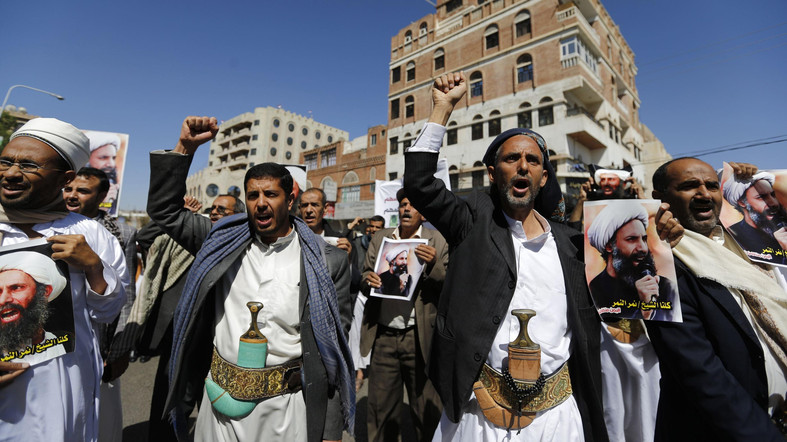A battle that could define the Yemen war
Manuel Almeida/Al Arabiya/Thursday, 23 July 2015
The alliance between the Houthi militias and the military forces loyal to former President Ali Abdullah Saleh is not the only surprise that emerged out of Yemen’s ongoing conflict. The country-wide military offensive by the Houthis and pro-Saleh forces dictated the rise of another alliance, which looked improbable until the conflict reached Yemen’s southern shores: the coalition between southern separatist groups and the military forces fighting for Yemen’s government in exile. Last week, southern separatist fighters, the militias known as Popular Resistance Committees and the pro-government military forces all backed militarily and logistically by the Saudi-led coalition, retook much of the former southern capital of Aden. This was the biggest strategic blow so far to the Houthi-Saleh camp. Recent reports talk about the imminent fall of the last few pockets of Houthi resistance in the city while key points such as the international airport and the Mualla port are already under full government control.
Yemeni government officials have been returning to Aden and a team of technicians from the UAE has worked over the last few days to re-open the airport. The largest food aid delivery in months reached the city via the port on Tuesday and more ships carrying urgent aid are expected to follow suit. Despite the big setback, remaining Houthi snipers continued to indiscriminately target civilians who ventured out in the open. The brutality of the Houthis in Aden increased considerably once it became evident they would not be able to hold their ground for much longer. On Sunday and Monday in the city’s northern district of Dar Saad alone, over 100 people (the majority of which were civilians) were killed in shelling by the Houthis.
A potential game-changer
Although not unexpected, the Houthi defeat in Aden and the gradual return of Yemeni government officials could prove to be a turning point in the conflict. First of all, it will allow a joint military council to coordinate from within Yemen the efforts of the various groups fighting the Houthis and pro-Saleh forces across the country and plan for a possible counter-offensive that could eventually bring the current crisis to an end. Although not unexpected, the Houthi defeat in Aden and the gradual return of Yemeni government officials could prove to be a turning point in the conflict
In a place where the political power of an individual or group is often measured by the ability to project force, the government’s absence was not sustainable for much longer. Aden in particular is a key strategic city and the government’s presence will provide a boost to the capabilities and the morale of the anti-Houthi forces.
The turning tide could also place the Yemeni government in a stronger position in the event of any new attempts to reignite the negotiations in the search for a political solution to the conflict. It will probably also force the Houthis and those members of the General People’s Congress who still back Saleh to consider more seriously the negotiations and the conditions set forth by UN Security Council Resolution 2216. Plus, reports that pro-Saleh Republican Guard and Special Forces withdrew from the outskirts of Aden in the end of June is now generating more speculation about the durability of Saleh’s alliance with the Houthis.
Southern separatism on hold?
Following these developments in Aden, another big question looming over the city and some of the southern provinces is how southern separatists will balance their longstanding political ambitions with the new reality they face. This war and the atrocities committed by the Houthis and pro-Saleh forces in the south have reinforced the will of many southern separatists to break away from Sanaa for good. In fact, it was the concentration of power in Saleh’s hands and his neglect of the south that gave rise to the southern separatist movement. After the civil war of 1994, there was a pro-unity momentum across the political spectrum. But Saleh’s rule proved unacceptable for most southerners, even though some important figures in his government were originally from the south. Years of unattended political and economic grievances were channeled to the creation of al-Hirak (Southern Mobility Movement) in 2007, which in a few years turned into a massive social protest movement.
However, the southern separatist movement has never been an example of unity, despite the efforts of its leaders since the start of the current war to bring its various factions together. It remains difficult to tell how the current conflict and the need to choose the government’s side has impacted the movement’s internal dynamics, the cleavages within its old guard and between them and the younger activists, as well as their separatist ambitions. The present focus of the supporters of a southern state in Aden seems to be, as it should, on the ongoing fight against the Houthis and pro-Saleh forces, the reconstruction of the city and the delivery of humanitarian and medical assistance. It is also impossible at this point to grasp what the will of other southern governorates is on the question of independence in the face of a new and constantly changing reality. The timing could not be less appropriate for Aden’s separatists to push forward their ambitions.
How does one explain the extreme violence of ISIS? Very simply!
Dr. Azeem Ibrahim/Al Arabiya/Thursday, 23 July 2015
ISIS brutality is a veritable circus of the macabre. But just when we thought that they might have reached the lowest levels of depravity, we hear that they allegedly blew up a baby in a video to demonstrate how to handle explosives to new recruits. As I have heard some British Muslims say before, it is difficult to conceive how these people are the same species as the rest of us.
But, if one can even countenance the overwhelming obscenity of this kind of behaviour for one second, we must at the very least ask where it might come from. How can human beings behave like this? And not just barbarous savages from distant history, or not so distant history if we think about the Holocaust and more recent genocides, but people who we might have known and lived with in our communities not so long ago. People who for most of their lives seemed, and indeed were, “just like us.”




















